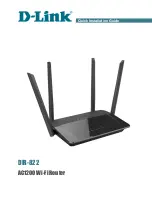
MAX User Interfaces
Using configuration menus
MAX 3000 Installation and Basic Configuration Guide
3-11
in the sequence (such as 1 to invoke the Dial command). On a VT100 terminal, the PF1
function key is equivalent to Ctrl-D.
DO menu commands provide ways to manage MAX units. In some cases, they duplicate
functions that are accessible through other methods, such as VT100 interface menu items.
The availability of a particular command depends on your location in the VT100 interface and
the Security profile in effect. (For information about Security profiles, see “Securing the MAX
from unauthorized configuration changes” on page 4-3.)
Managing MAX configuration and management sessions
The commands summarized in Table 3-3 are tools for managing sessions with MAX units.
Testing and troubleshooting MAX units
The DO commands summarized in Table 3-4 are tools for testing and troubleshooting MAX
units.
Table 3-3. DO menu commands for session management
DO menu command
Function
ESC (DO 0)
Aborts and exits the DO menu.
Load (DO L)
Loads parameter values into the current profile.
Menu Save (DO M) 8
Saves the VT100 interface menu layout.
Password (DO P) 9
Logs in to or out of the MAX.
Save (DO S)
Saves parameter values in the specified profile.
Close TELNET (DO C)
Closes the current Telnet session.
Table 3-4. DO menu commands for testing and troubleshooting
DO menu command
Function
Beg/End BERT (DO 7)
Starts and stops the Bit Error Rate Test (BERT).
Beg/End Rem LB (DO 6)
Starts and stops a remote loopback.
Beg/End Rem Mgm (DO 8)
Starts a remote management session.
Diagnostics (DO D)
Accesses the diagnostic interface, which provides access
to numerous additional diagnostic commands. The diag-
nostic interface is described in “Using the Diagnos-
tic-mode CLI” on page 3-18.
















































